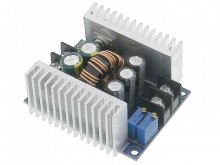I had no idea. Considering what it cost, I bet it is steel.Hopefully not steel but manganin. Max recommended service temperature is 140C if you want long-term stability.
Better shunts are 0.1% accuracy and if you don't want to introduce gross error to shunt accuracy it is better to keep the temperature rather small.
For manganin shunt 50C increase causes -0.1% error to measurement.
Although Your use with cooling fan is fine.
Amazon.com: SMAKN 30A/75mV DC Current Measure Divider Shunt for AMP Meter : Electronics
Amazon.com: SMAKN 30A/75mV DC Current Measure Divider Shunt for AMP Meter : Electronics
www.amazon.com



![PXL_20210122_184547763[1].jpg PXL_20210122_184547763[1].jpg](https://diysolarforum.com/data/attachments/34/34156-5cb1ef8291a1221f227d83a5c2fa0328.jpg)
![PXL_20210122_184848630[1].jpg PXL_20210122_184848630[1].jpg](https://diysolarforum.com/data/attachments/34/34158-261b4de9cf2a17c35afdd4cf475d4288.jpg)


